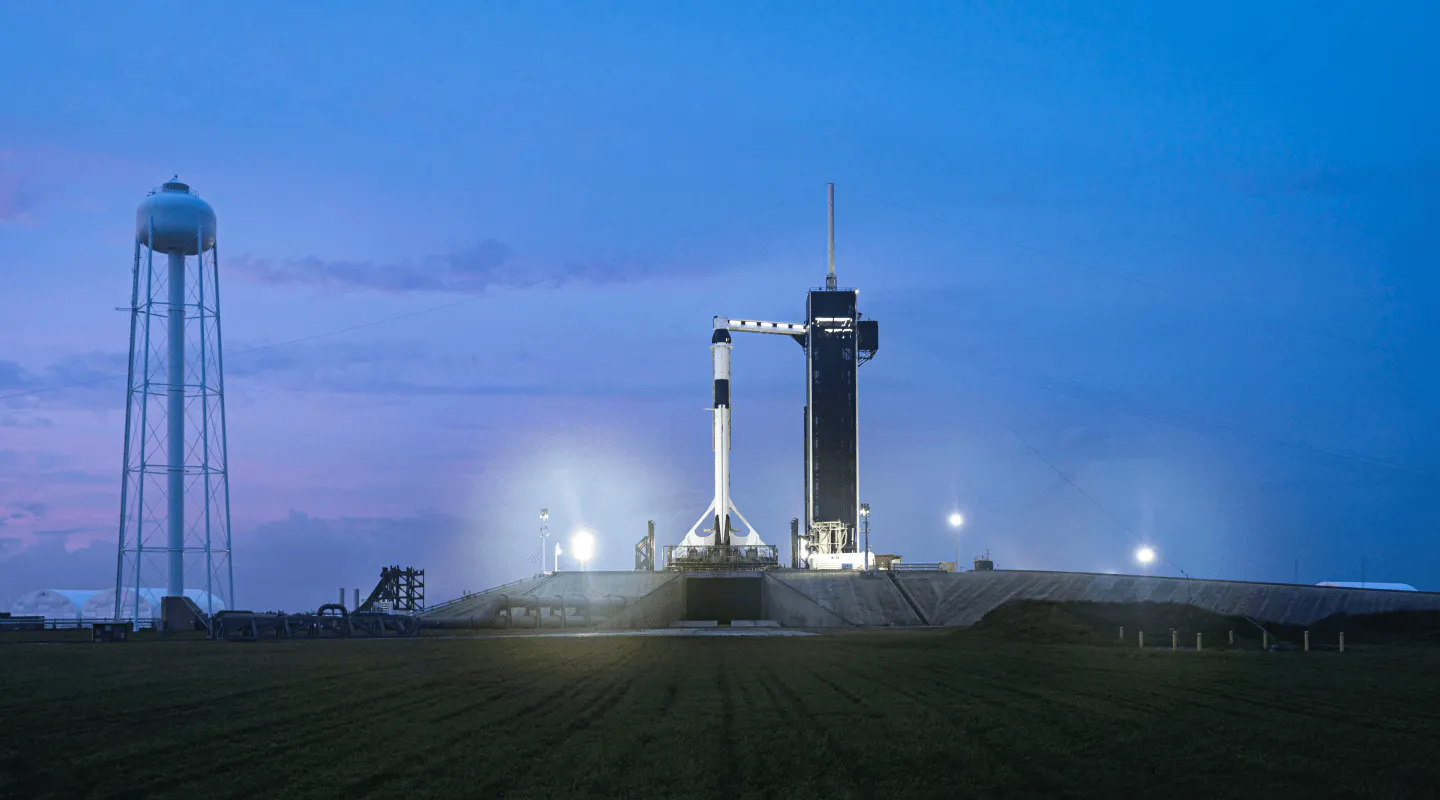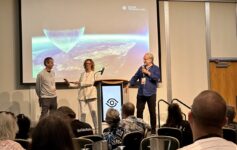The first all-civilian space mission has returned to earth and has vastly improved the possibilities for space tourism.
If you are considering booking travel or signing up for a new credit card please click here. Both support LiveAndLetsFly.com.
If you haven’t followed us on Facebook or Instagram, add us today.
Inspiration4
A commercial aired during the Super Bowl in February announcing that not only would the first-ever all-civilian space flight take off this year, but the Inspiration4 crew would feature seats available to the public. By donating to the St. Jude Children Research Hospital, would-be private astronauts would be entered in a raffle to win a slot as a crew member along with Jared Isaacman, founder of Shift4 Payments who funded the trip.
The fundraising goal of Inspiration4 was to raise $200 million, $100 million came from Isaacman but the mission fell short of its goal with $60 million coming from the public.
The launch aboard a Falcon 9 rocket departed from the historic Kennedy Space Center where SpaceX has leased 39A, the same launchpad that the Apollo missions used – which, Elon Musk and SpaceX have since renovated and modernized.

The crew included entrepreneur Sian Proctor, who had twice applied to become an astronaut through NASA but had not been selected. Her father had worked for NASA supporting the Apollo missions. Chris Sembroski, father and husband, was chosen from the raffle of St. Jude’s donors. Hayley Arceneauxis a childhood cancer survivor who was treated at St. Jude’s, only to return there as a Physician’s Assistant. She was the youngest crew member and represented Hope.
The Inspiration4 was unique not only in that the crew was all-civilian but also in its destination. The mission went well above the Karman line, past the height of the International Space Station and still further past the Hubble telescope. For three days the crew took in the views and conducted scientific experiments before splashing down into the Atlantic ocean in the Dragon capsule last night.
Billionaire Space Race
This summer has been the billionaire space race. Inside of 10 weeks, three space tourist missions were launched from three separate companies in very distinct ways. Richard Branson climbed aboard his Virgin Galactic vessel and flew with a crew that included staff for a five-minute sub-orbital flight that included weightlessness and a departure from and return to the New Mexico home for the carrier.
Like Branson, Jeff Bezos flew on Blue Origin’s New Shepard rocket with his brother, an 18-year old engineering student, and Wally Funk, a NASA female astronaut who was unable to fly with the agency during her tenure. His mission shot to low earth orbit as well before descending, the rocket autonomously landing back on the launch pad and the capsule following a short while later, softly touching down in the West Texas brush.
Musk, founder and largest shareholder of SpaceX chose not to fly on Inspiration4 but made history all the same. The most frequent rocket launching company in the world (by far) not only carried solely civilians but reached higher and farther than the others by a wide margin.
In this three-horse space race, Branson was able to demonstrate an affordable means for a space experience. Bezos demonstrated that Blue Origin may be a real contender against the much more active SpaceX, but it was only the latter that truly proved that Space tourism as we have always thought of it could be achieved.
Bringing Space Tourism Down to Earth
When Dennis Tito became the first space tourist in 2001 aboard a Russian-made and launched rocket, it was evident that such a trip was possible for the extremely rich. On the surface, that remains the case today with the exception of Virgin Galactic’s option, though the experience may differ from what space tourists prefer if given the choice.
However, this will not always be the case and that’s become evident in just the last few months. Private industry and competition amongst billionaires have already lowered the cost of delivering equipment and people to the heavens.
At the time of the Space Shuttle, a launch cost between $576MM and $1.64bn. Commercial space launches prior to SpaceX for a satellite ran $100MM, but with the use of reusable rockets, Musk has already lowered that cost to $60MM per launch on his way to $10MM. That dramatic difference will help the private firm as it begins Starship runs and ultimately delivers supplies and human beings to the lunar surface in 2024-2025.
While $10MM for four people is still very expensive ($2.5MM/per), the larger Starship will be able to spread that cost out over more space tourists and cargo to subsidize the cost of the flights. Dennis Tito was said to have paid more than 10x that price just 20 years ago. The goal of the entire industry is to make space travel:
- accessible
- frequent
- normalized
They are on their way to accomplishing those goals and that would be one small step for billionaire rocket enthusiasts and one giant leap for space tourism.

Conclusion
Inspiration4 achieved its goals of flying an all-civilian crew, returning them to earth, raising a substantial amount for St. Jude’s, and inspiring the public. If you haven’t seen the Netflix series documenting the journey, I recommend watching it.
What do you think? Did Inspiration4 present a reliable option for future space tourism? Did you enter the raffle? Would you have gone if given the opportunity?




I worked at NASA for 12 years and helped with the agreements the agency signed with SpaceX and Boeing to build the Dragon and Starliner vehicles to support re-supply missions to the ISS. Ergo, while “space tourism” is chic at the moment, and doubtless SpaceX has a handsome product, none of this would be happening without taxpayer dollars and collaboration with NASA. In my humble opinion spaceflight should be the realm of professional astronauts and not “tourists.”